This is a Super Baldina, a 35mm rangefinder camera made by Balda-Werk Bünde in Bünde, North Rhine-Westphalia, West Germany, starting in 1954. This was the second camera released by Balda with the name Super Baldina, the first being a completely unrelated folding camera produced in prewar East Germany between 1938 and 1940. The postwar Super Baldina had a rigid body with a collapsible lens. Although the lens was not interchangeable, Super Baldinas can be found with at least eight different lenses, ranging from simple triplets to more advanced 6-element designs and a variety of Prontor and Compur leaf shutters. The Super Baldina was a fairly advanced camera and featured a coupled coincident image rangefinder and had an in body focusing helix, something not found on cheaper cameras.
Film Type: 135 (35mm)
Lens: 50mm f/2.8 Balda-Werk Bünde coated 3-elements in 3-groups
Focus: 3 feet to Infinity
Viewfinder: Coincident Image Coupled Rangefinder
Shutter: Prontor-SVS Leaf
Speeds: B, 1 – 1/300 seconds
Exposure Meter: None
Battery: None
Flash Mount: Cold shoe and M and X Flash Sync
Other Features: Self-Timer
Weight: 576 grams
Manual: https://www.cameramanuals.org/pdf_files/balda_baldina.pdf
How these ratings work |
The Super Baldina was the West German Balda-Werk Bünde’s highest specification camera when it came out and although it wasn’t produced for long is a very well put together lens that can be found with a wide variety of lens and shutter combinations. Even with one of the more basic triplet lenses and Prontor shutters, is capable of excellent images. The camera has very good build quality, a large and easy to use coupled rangefinder, and is a lot of fun to use. The 1950s was a crowded time for fixed lens German rangefinders, but the Super Baldina is one of the finer examples out there. | ||||||
| Images | Handling | Features | Viewfinder | Feel & Beauty | History | Age | |
| 2 | 1 | 1 | 1 | 2 | 1 | 30% | |
| Bonus | +1 for overall excellence, this is a camera that is much better than it should be, the complete package | ||||||
| Final Score | 11.4 | ||||||
History
 In 1897, a German mechanic named Max Baldeweg moved to Dresden to seek work in one of the many industrial companies in that area. After a couple of years, Baldeweg had developed an interest in photography and in November 1908 opened his own company which produced and sold a variety of photographic accessories such as vignetting machines, film pack cassettes, and photographic blinds.
In 1897, a German mechanic named Max Baldeweg moved to Dresden to seek work in one of the many industrial companies in that area. After a couple of years, Baldeweg had developed an interest in photography and in November 1908 opened his own company which produced and sold a variety of photographic accessories such as vignetting machines, film pack cassettes, and photographic blinds.
Baldeweg’s company was quite successful and by 1912 opened a second factory and changed the name of his company to Fabrik Photografischer Artikel Max Baldeweg. Around that same time, Baldeweg started using the “Balda” trademark on several of his products, and the very next year changed the entire name of his company to Balda-Werk Max Baldeweg.
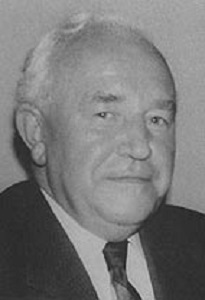
Over the next decade, Balda-Werk expanded it’s business, producing a large number of products in support of the photographic industry, but it wasn’t until 1925 that the company produced it’s first commercial camera, a simple box camera called the Balda Box.
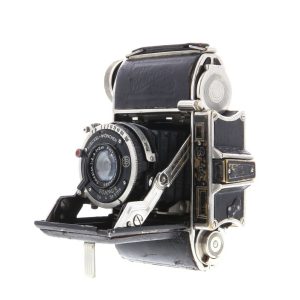
As the years went on, Balda cameras increased in quality and complexity. Supplementing the company’s popular line of box cameras were folding roll film cameras, and then eventually compact 35mm scale focus and rangefinder cameras like the Baldina and Super Baldina that would compete with the Kodak/Nagel Retina series. Balda-Werk earned a reputation as one of the Dresden area’s premiere camera companies.
Around 1940, along with nearly every other German company, production of cameras was halted to support the German war effort. Balda produced a variety of optical goods such as altimeters and variometers for military use. During the bombing of Dresden in February, 1945, Balda’s factories were heavily damaged and required extensive repairs after the war.
As soon as the war ended, reconstruction of Balda’s factories began, and Max Baldeweg returned as owner but left the day to day decisions up to a man named Willibald Lauterbach. Hampered by their reconstruction efforts, Balda’s first post-war products were children’s toys and simple household goods.
During this time, Soviet occupation in the Dresden area was quickly taking control over German owned businesses, turning them into state owned enterprises, or VEBs. The Soviet occupation forces were very suspicious of anyone they considered even remotely critical of their new regime, and for reasons I could not uncover while researching this article, in June 1946, both Max Baldeweg and Willibald Lauterbach fled East Germany, abandoning their company, and relocated to East Westphalia in Allied controlled West Germany.
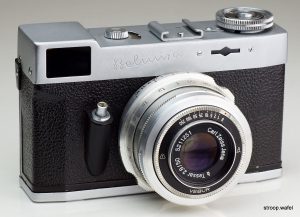
After their departure, the East German Balda started producing a simple clone of the Compur shutter called the Ovus. This shutter would be the foundation for later Cludor and Vebur shutters which were commonly used in East German cameras. In 1950, Balda was absorbed into VEB Zeiss Ikon and in 1951, was renamed VEB Belca-Werk. Belca-Werk produced mostly inexpensive folding cameras for a few more years before being fully absorbed into VEB Kamera-Werke Niedersedlitz in 1956. One exception to their run of cheap cameras was the Belca Belmira, an unusually shaped rangefinder camera that debuted in 1953, but would later be sold under the name “Welta” after the dissolution of Belca.
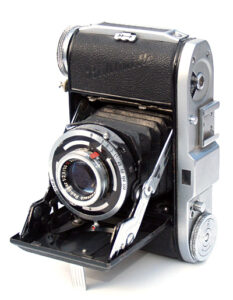
Out west, after settling in Bünde, West Germany in the late 1940s, Max Baldeweg formed an all new Balda Kamera-Werk. The new Balda company’s first products were simple folding medium format and 35mm “white label” cameras that were sold as house brands for German retailers such as Foto-Quelle and Porst. By the early to mid 1950s, Balda improved their designs, creating more advanced versions of the prewar Baldina, and eventually moving onto non-folding designs like the Baldessa, Baldamatic, and Super Baldina.
The Super Baldina was a higher end model that shared it’s name with a prewar Balda camera of the same name, but other than support for the same 35mm film and having a coupled rangefinder, the two cameras are entirely different.
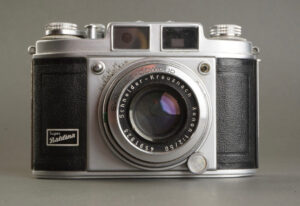
The new camera was Balda Bünde’s highest specification model and had a solid body with a collapsible fixed lens and a coupled rangefinder. Versions of the camera were sold without a viewfinder, but an uncoupled meter in it’s place.
Although the lens was not interchangeable, Super Baldinas can be found with either Prontor SVS or Synchro-Compur shutters, and several different lenses, ranging from 3-element Balda Baldanar and Schneider-Kreuznach Radionars, all the way to 6-element Schneider Xenon or Rodenstock Heligon lenses. Not all lens/shutter combinations were available in all markets, and the higher end 4 and 6-element lenses were far less common.
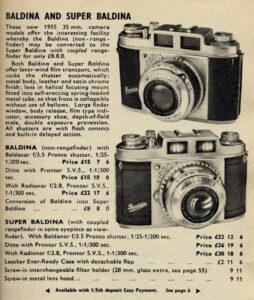
Interestingly, in the Super Baldina’s owners manual, page 6 mentions that any Baldina camera may be upgraded to a coupled rangefinder model. Details on exactly how this is possible are scarce, but a few sites online suggest this was a factory option, and not something the end user would do themselves. That the factory offered this upgrade, suggests that the camera is modular, perhaps the entire top plate can be swapped out in one piece, replaced by one with a rangefinder. How much this upgrade cost, or if it was available to users outside of Germany is unknown.

Name Confusion: In my research for this article, I found this Dutch language site which claims that the non-rangefinder equipped model was simply called the Baldina and lacked the coupled EV setting on the shutter. When equipped with a rangefinder and the coupled EV scale, it was called the Super Baldina II. While this explanation certainly makes sense, I have not found any reference to the camera being sold as the Super Baldina II. The name plate on my rangefinder equipped model simply says Super Baldina. Unless I find more evidence otherwise, I’ll continue to refer to the rangefinder version, simply as the Super Baldina.
Balda cameras like the Super Baldina were sold all over Europe, including England, France, and Germany, but they were also exported to the United States. The biggest importer of Balda cameras was Kling Photo in New York City, but I also saw Balda cameras for sale at other retailers such as Shutan Camera in Chicago.
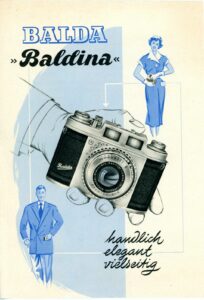
In the 1956 ad to the left for Kling, the Super Baldina sold in an outfit with a flash and ever ready case for $69.95. The specifications for the camera list a top shutter speed of 1/300 suggesting the Prontor-SVS shutter was used, and an f/2.8 lens, but it does not specify which one. This seems identical to the camera I used for this review, so I’ll guess it would be the Baldanar 50/2.8. When adjusted for inflation, the camera outfit’s price compares to $785 today, making it a solid mid level camera.
I could not find any contemporary reviews for the Super Baldina, but for the price, having a high quality German rangefinder with a good lens and shutter for $69.95 was likely appealing for an American photographer looking for those features. The higher end lenses and Synchro-Compur shutter do not appear to have been sold in the US as the prices to import them likely would have had them competing with higher end, more well known brands.
I could not find any information about how long the Super Baldina was in production, but a good guess would be until 1957, at which time the company released an all new line of more compact 35mm scale focus and rangefinder cameras in the Baldessa series.
The simplest Baldessa I was introduced in 1957 and was an unmetered scale focus camera with a simple 3 speed Vario or Prontor shutter and one of three different triplet lenses. Shortly after it’s release, the Baldessa Ia would debut with a coupled rangefinder and better lens and shutter combinations. Later models like the Baldessa Ib, Baldamatic, Baldessamat, and Super Baldamatic further advanced the line.
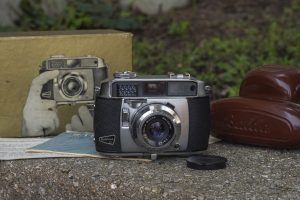
By the 1960s, due to massive pressure by the rapidly expanding Japanese camera industry, companies like Balda found it harder and harder to stay competitive. Balda’s offerings in the 1960s became increasingly simpler and cheaper, eventually creating cheap copies of the Minox 35 series and a huge number of plastic point and shoot cameras that used Kodak’s new Instamatic type 126 film. By the 1970s, most of Balda’s production were cameras rebadged for other companies. The days of Balda’s abilities to stand on their own and compete with other quality cameras was over. Balda would limp on into the 21st century with it’s original factory in Bünde closing in 2001.
Today, there’s no shortage of people collecting German cameras. While Zeiss-Ikon, Leica, and Voigtländer are the premiere marques that most people look for, a huge number of worthy cameras by companies like Leidolf, AGFA, Wirgin, and Balda are worthwhile additions to any collection. Max Baldeweg’s decision to setup a new company in West Germany was a wise one as his out of cameras was much better than what was left of his former company in Dresden. Many 1950s Balda cameras are fine shooters with good build quality and cameras like the Super Baldina are definitely worthy of your consideration.
My Thoughts
Throughout the 20th century, many cameras were made in Germany. Many of those cameras had very similar designs and lists of features. While the Leicas and Zeiss-Ikon cameras were usually the most desirable, a huge number of other German makers like Balda, Certo, Welta, Leidolf, and others made capable, if slightly unremarkable cameras as well.
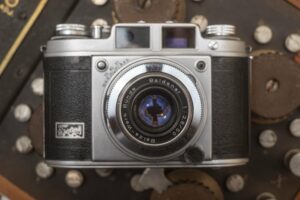
Within that latter group, there are some standout models for sure. The Leidolf Lordomat in particular is a little known camera that I absolutely love using and have gotten great results from. The prewar and early post war Certo and Welta folding cameras are pretty similar in design and performance to the much more popular Kodak Retina series and worth considering for collectors and shooters as well.
I have previously reviewed the Balda Baldessa Ib and found it to be an excellent camera that produced wonderful results, so I had always been open to another by the same company. The day I saw a Super Baldina, I was immediately drawn to it. Perhaps it was it’s large viewfinder and rangefinder windows, or it’s collapsible front lens, or it’s overall styling, I can’t put my finger on what it was exactly, but when my friend and fellow GAS enabler, Paul Rybolt had one for sale, I knew I had to have it.
When the Super Baldina arrived, I was impressed with it’s size and heft. Slightly wider and taller than a Kodak Retina IIc from the same era, but weighing a few grams less, the Super Baldina is still a heavy camera for it’s size. Although Balda rarely was considered a direct competitor to the Retina series, in terms of size and build quality, they’re at least on the same page.
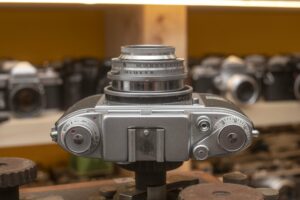
Up top, the Super Baldina has a familiar control layout compared to many other 35mm cameras. On the left is the rewind knob with a film reminder disc beneath it. The camera lacks a meter so this disc has no function other than to tell you what type of film you’ve loaded. In the middle, above the viewfinder and rangefinder windows is an accessory shoe, likely for attaching a flash or perhaps even a clip on exposure meter.
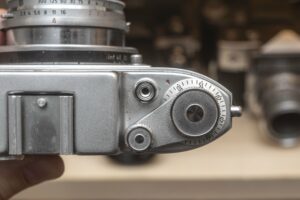
To the right is the cable threaded shutter release button and combined film advanced lever and exposure counter beneath. The film advance lever is a bit short, but has a short throw of about 180 degrees for a full motion, making film advance quick and easy to do. The exposure counter is additive, showing how many exposures have been made on the current roll, and must be manually reset after loading in each new roll of film.
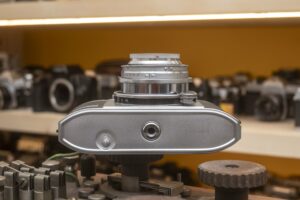
Flip the camera over and all there is to see is a centrally located 1/4″ tripod socket, rewind release button, and the camera’s serial number. Unlike many 35mm cameras, the Rewind release button will not stay pressed on it’s own. While rewinding film at the end of the roll, you must maintain constant pressure on the button.

On the left side of the camera is the lock for opening the film compartment. A metal latch at the top of the lock must be raised to unlock the film compartment door. On both sides of the camera are chromed metal strap lugs for carrying the camera around on a neck strap.

Around back is a small rectangular eyepiece for the viewfinder with an embossed Balda logo in the metal plate below the accessory shoe. The body covering covering the entire door has a rectangle design around the perimeter and the words “Made in Germany” imprinted into it. Whatever the body covering is made of on this camera, on my example it appears to be in excellent condition, without any peeling, cracking, or any other kind of damage.
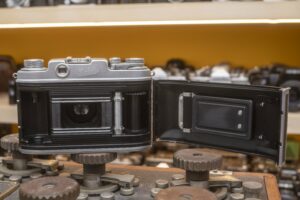
The right hinged film door swings open to reveal the film compartment. Film transports from left to right onto a single slotted and non-removable plastic take up spool. Loading in a new cassette requires lifting up on the rewind knob to move the fork out of the way, then stretching the leader across the film gate and attaching it to the spool. A textured ring around the top of the take up spool allows you to easily rotate the spool to get the leader properly attached. The film gate itself has two rows of unpainted film rails and on the inside of the film door is a black painted film pressure plate with a strange rectangle encircling it. The Super Baldina lacks any sort of light seals around the film door or hinge, so no replacements are necessary to keep light out.
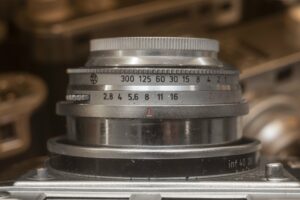
Looking down upon the top of the lens and shutter, the most important thing to remember is that the Super Baldina has a collapsible lens, so you must always first press a chrome button on the front face of the camera, in front of the shutter release. Pressing this button releases the shutter with quite a bit of force as the camera is ready for use. The Super Baldina has a safety feature which prevents you from pressing the shutter release with the camera collapsed.
Closest to the body is the focusing helix which moves the entire lens, shutter, and shutter tube forward and back. A chrome on black focus scale shows distances from 3 feet to infinity. A red dot between 7 and 10 feet and a yellow dot between 20 and 40 feet are used for focus free operation for group and landscape shots. A depth of field scale is engraved into the front plate of the camera near the focus index mark. A full motion from minimum to infinity focus is quick, requiring about a 90 degree turn of the helical.
On the shutter itself are both the shutter speed and aperture rings. Like many cameras of it’s era, the Super Baldina couples these two rings together with EV values. When looking down upon the shutter from the top, written in black, f/stops from f/2.8 to f/16 and 1 to 1/300 are visible. From the side however, red EV numbers from 2 to 17 indicate the exposure value number. With a compatible light meter, take an exposure reading and whatever EV number it recommends, set the camera to the same number and you should have correct exposure regardless of shutter speed or f/stop. If however, you don’t use a meter and just want to pick whichever combinations you want, a chrome button to the left of the f/2.8 setting must be pressed in to decouple the two rings. With this button pressed in, choose your f/stop first, and then shutter speed second. The Super Baldina’s implementation of the coupled EV scale isn’t the worst I’ve seen, but I have never liked this feature on any camera I’ve encountered it on. Finally, on the side of the shutter near the EV numbers is a separate slider for both M and X flash synchronization and a V setting for the self timer. Do not attempt to set the self timer, unless you are absolutely sure it works as it can jam the shutter.
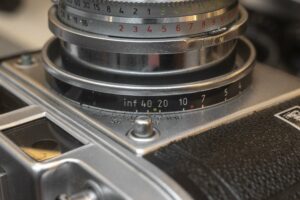
Looking at the camera from the front, we see the chrome button for uncollapsing the lens near the 10 o’clock position around the lens and the depth of field scale I previously mentioned. Near the 2 o’clock position is the flash sync port, and depending on the distance set, a round handle for the focus helical. On the front of the camera body, to the bottom and left of the lens is a rectangular plate that originally had the camera’s name silkscreened on it. On most examples of this camera I’ve seen, this logo is scratched off. On this one, you can still make out part of what it says, but others, it’s completely gone.
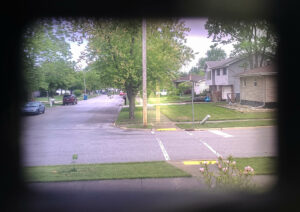
The viewfinder is not as large as the front window would suggest, but it’s also not as squinty as some pre and early postwar rangefinders are. The viewfinder has a deep purple tint to it which makes seeing the the bright circular clear rangefinder patch very easy. This is one area in which the Super Baldina improves upon the Kodak Retina IIa and IIc (small ‘c’) models as I found the rangefinder patch very easy to use and although I could not see all four edges of the viewfinder while wearing glasses, I could see most of it and it didn’t cause me too much trouble when composing my images. There are no frame lines or other settings visible in the viewfinder.
The Super Baldina was Balda’s most advanced 35mm camera upon it’s release and the efforts the company went into making as great of a camera definitely still shine today. It has a wonderful build quality, and the control layout is surprisingly modern for a camera from 1954. I’ve shot many other cameras from this same era that were far more dated, including many East German models that had some of Balda’s lineage from before the war. When you handle the Super Baldina, it is clear this is a step up above a cheap, entry level camera, but how good is it really? Keep reading…
My Results
Feeling both confident that the Super Baldina was in good working order, and eager to get out and shoot it, I loaded in a roll of semi-expired Fuji 200 and took the camera with me on a winter trip to northern Michigan, where colors aren’t exactly plentiful. In hindsight, I wish I had loaded in some black and white film, but I didn’t. Maybe next roll…
Upon seeing the good results from the first roll, I wanted to shoot the camera again, this time with black and white. For the second roll, I loaded up a commercial roll of expired Kodak Plus-X 125. I have an expired bulk roll of this stuff and got good results from it, so I figured it would be a good roll to try in the Super Baldina.
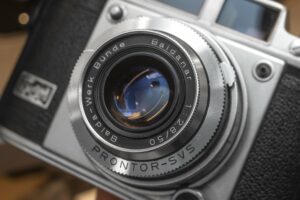
I had a feeling I would like the Super Baldina when I first got it, but as I shot frame after frame, my excitement for using the camera grew. By the end of the first roll, I was pumped to see the results and couldn’t wait to shoot it again. While this camera likely won’t elicit a lot of fanfare from it’s limited specifications, in use, this is a classic example of a camera that knows what it wants to do and makes the best of what it was. Like other coupled rangefinder cameras like the Kodak Signet 35 and AGFA Karat series, the Super Baldina is a great midlevel camera that can hold it’s own to more illustrious models.
Images from the Balda-Werk Baldanar triplet were very good. Another lens that this lens reminds me of is the Schneider Radionar which I consider to be one of the best German triplets ever made and was one of the six available on this camera.
Sharpness is great in the center, with only mild softening near the edges. Vignetting was surprisingly low in outdoor scenes, suggesting coverage from the lens is very good. Although I was shooting expired color film in my first roll, I found no strange color shifts and feel that even had I used something like fresh Kodak Ektar or some kind of slide film, colors would be spot in. Contrast was good, and I found no optical anomalies often associated with lesser lenses. If you’re planning on adding a Super Baldina to your collection but want to hold out for a higher spec lens, that’s your choice, but you should know that you won’t be missing out on too much with the lowly Baldanar.
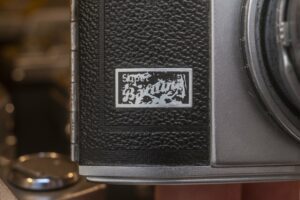
For a coupled rangefinder camera from 1954 when large and bright viewfinders weren’t yet standard, the one on the Super Baldina is very good. Sure, it’s not as gloriously large as the huge pieces of glass on the Voigtländer Vitomatic IIa and it doesn’t have projected frame lines like many rangefinders that were soon to follow, but the one here does everything it needs to, and it does it well. I was impressed with the amount of contrast between the main viewfinder and rangefinder circle, making it usable in most lighting situations.
The camera is large, but not overly so. With the lens and shutter collapsed, the camera is pretty compact, front to back, almost like a Retina when folded shut. I found that with my average sized hands, all of the camera’s controls fell exactly where I expected them to be. The collapsible lens isn’t something I’d normally comment on, but I like the manner in which it is erected. Press the release button on the front of the camera and the shutter and lens shoot out with authority, making a solid clunk as it reaches it’s shooting position. The stubby shutter release is quick and easy to advance the film in a single stroke, quickly getting you ready for your next exposure. Finally, the location of the shutter release was perfect for a top plate release. I wonder what a front facing shutter release on this camera might have felt like, but it really wasn’t necessary as I find it’s location to be very intuitive.
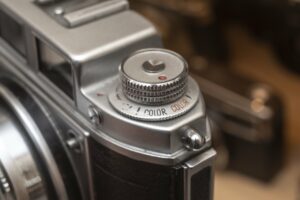
On paper, you might look at the Super Baldina and suggest it is missing some features like an exposure meter, an interchangeable lens mount, or an even larger viewfinder, but I honestly do not believe that adding any of these features would have made the camera better. In fact, I believe that adding more features to it would dilute what’s good about it. This is a very solid and well thought mid 50s German rangefinder that does exactly what it needs to, and nothing else.
If there’s one thing I truly don’t like about the Super Baldina, it is the one thing that I ALWAYS complain about, which is the coupled EV scale. Both the aperture and shutter speed rings are hard coupled together. Rotating one always rotates the other and cannot be overridden by rotating past the lowest or highest numbers like on some other cameras with coupled scales. The only way to independently change shutter speeds and f/stops is by pressing a small button to the left of the f/stops and rotating the ring. It’s not a deal breaker, but it’s not great either.
Beyond that, the Balda Super Baldina is a heck of a camera. It is a model that is not often talked about and one I definitely think people should give a chance to. That I was able to get such great images from one of the lesser lenses available for the camera, finding one with a more complex 4 or 6 element lenses would make for a very special camera. Perhaps the best thing about these cameras is that they usually don’t fetch much in the online marketplace, so you should have no problem finding one for a very economic price. Highly recommended!
Related Posts You Might Enjoy
External Links
http://camera-wiki.org/wiki/Baldina#Baldina_.2F_Super_Baldina_.28rigid.29
https://oldcamera.blog/2015/01/27/balda-super-baldina/
https://vintagecameralab.com/balda-super-baldina/
http://photographytoday.net/forums/viewtopic.php?t=1914
https://www.camarassinfronteras.com/super_baldina/super_baldina.html (in Spanish)
https://www.photo.net/forums/topic/416207-some-shots-with-the-baldina/

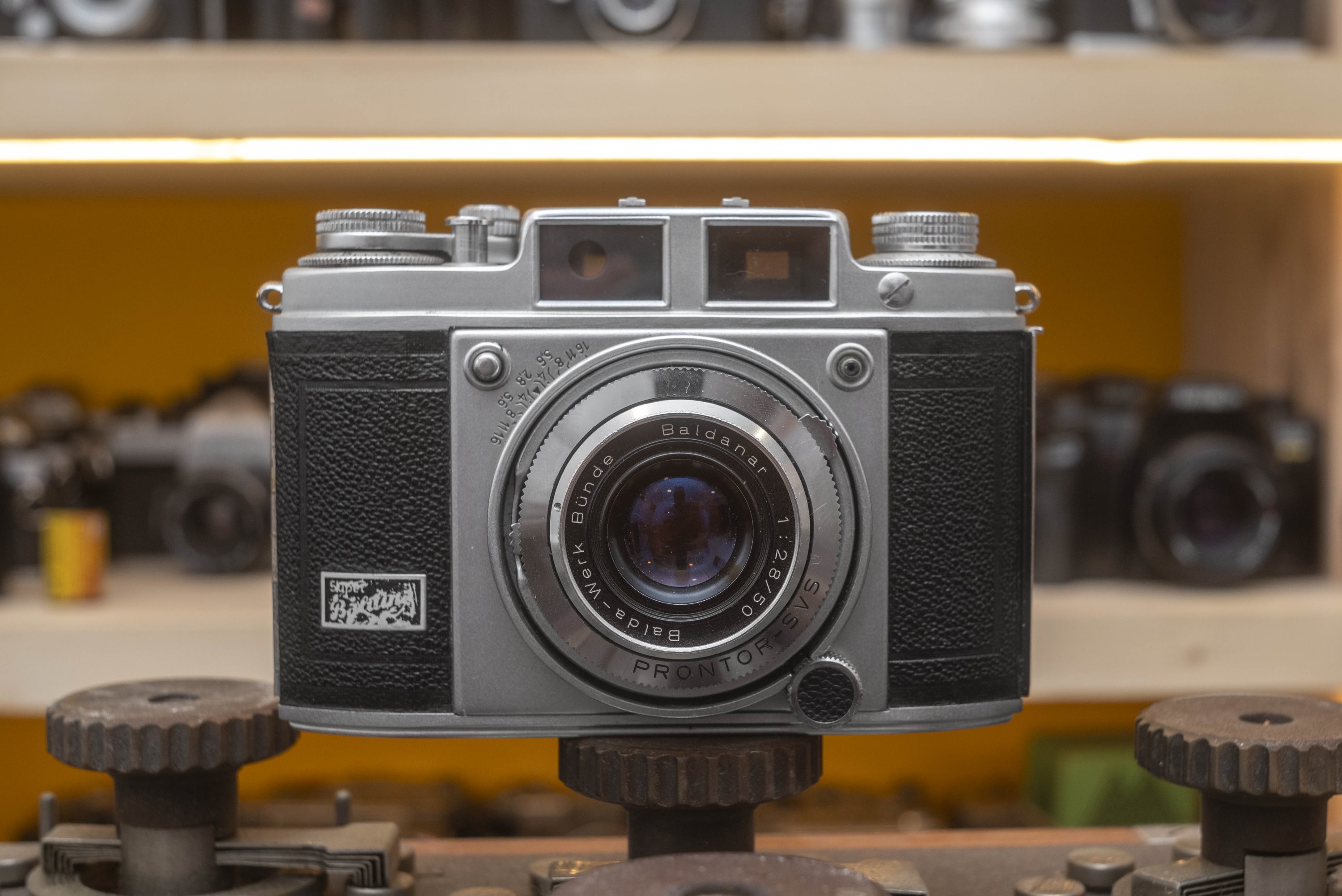
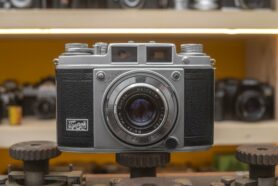
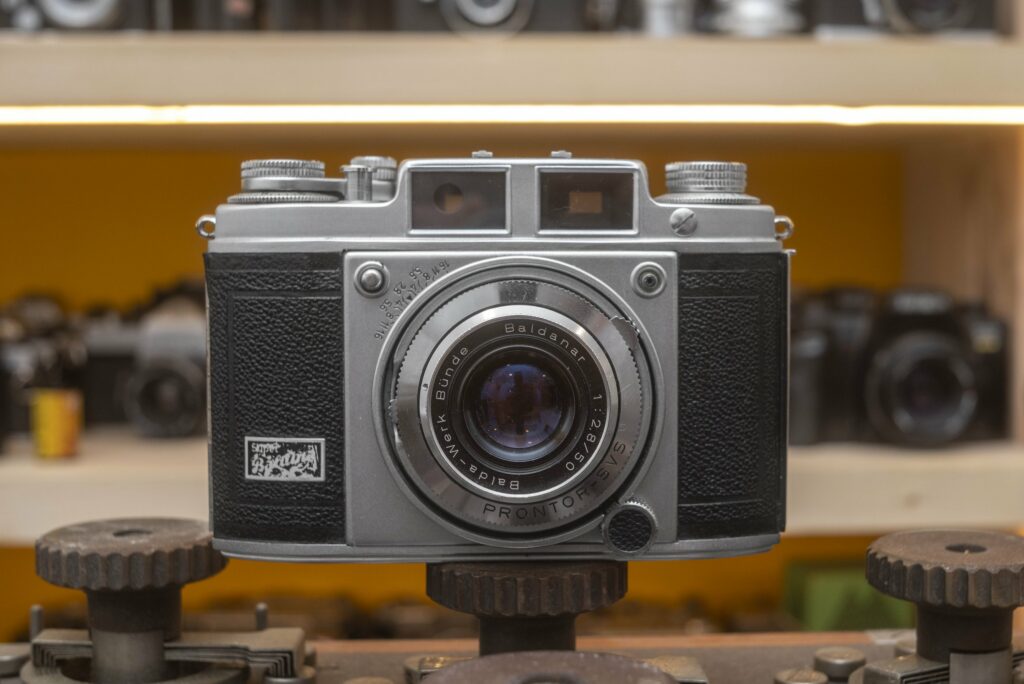





























Interesting when you said aperture and speed were linked together and I said to myself since when? Yes, my long time Super Baldina has a shutter speed dial that faces forward with a larger aperture dial behind also facing forward. You read the settings from the front as none are visible from the top and they move separately. Flash port in the lens barrel between the two. Mine 058618
That is interesting. My guess is you have a different lens and shutter combination than I. The coupling of the shutter speed and aperture is a function of the shutter. Mine has the Prontor-SVS, which one does yours have?
Nice camera !
I have 3 of those little beasts, one with the Radionar, another one with the Xenon, and the last… er, i forgot 🙂
The radionar is truly really impressive : color or b&w, i couldn’t believe the results of it ! Really worth the investment.
That camera lacks a rangefinder, which is why i purchased another one… but soon learnt that the rangefinder won’t fit the radionar one.
Then, the Xenon one, which lens is perfect and crystal-clear, but the body is a heck of a wreck… i must find some time to care for it !
Overall, they’re nice cameras, easy to like and to use… one of their weakpoint is the felt around the collapsible lens, which can become not so light-tight with time. So, i open and close mine as few as i can, and never facing the sun 🙂
Yes, I’ve read on other sites about the felt light trap on the barrel potentially causing light leaks. So far so good on mine but thats definitely worth keeping an eye on.
Thank you for the wonderful review! I have a Super Baldina with the Schneider Radionar 50mm f/2.8 lens and Prontor-SVS shutter. I have not shot with it yet but it appears to be in good working order. The shutter speed and aperture are uncoupled and my camera does not have any display of EV numbers.